Google Updates. We’ve all heard about them and, to some extent, we all fear them. Even if you’re 100% clean and always follow the Google guidelines, you can still suffer from the dirty work of others.
But what do you do when a new Google Update arises? How do you know it’s the cause of a traffic drop on your website? What are the steps you need to take in order to determine that?
Well, keep reading, because in this article we’ll discuss the steps you should take when a new Google Update is announced.
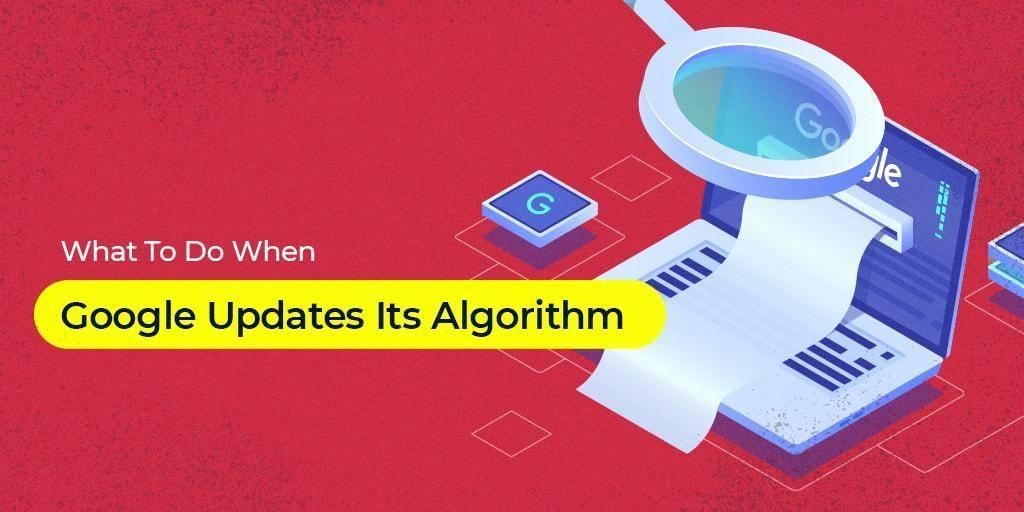
- Follow the Right Sources
- Check Your Traffic & Positions
- Check Again & Don’t Rush to Take Action
- Get in Touch with an Expert
- Audit Your Website
- Exclude Other Penalty Possibilities
- Develop a Strategy for Recovery and Execute It Step by Step
- Keep Doing the Good Type of SEO
1. Follow the Right Sources

As soon as a new Google Update kicks in, thousands of bloggers start writing about it. Not all resources, however, are trustworthy.
I’m not saying that people have bad intentions, but they might be uninformed or might have ran the wrong tests to determine the effects of the update.
Just a couple of weeks ago, someone in an SEO Facebook group ‘analyzed’ the last August Google Update and pulled out some pretty sketchy conclusions.
Luckily, people figured it out pretty quick and started complaining in the comments. It wasn’t necessarily bad advice, but it didn’t really have anything to do with the update.
Ok, you’re probably wondering what sources you should follow by now. Well, they’re a handful, to be honest.
There are four main sources where usually all the news come from:
First, we have Google’s Official Webmaster Blog. Here is where Google officials will compile an official statement when they want to publicly announce something. You can also follow them on Twitter at @googlewmc and on their YouTube Channel. However, Google will rarely share any specifics about any update, other than the fact that it has been implemented.

Then, there are the three big news portals in the Search Engine industry which are Search Engine Journal, Search Engine Land and Search Engine Roundtable. This is where journalists and experts in the industry post the freshest news about Google and search engines in general, which means it includes Bing, Yandex and others.
Obviously, sources don’t stop here. You can also follow blogs such as Moz and Backlinko. Blogs such as these will provide the information with a delay but will also often compile it into step by step, very actionable advice and guides.
Last but not least, you should obviously follow our blog. Subscribe to cognitiveSEO and follow us on Facebook and Twitter to get the lastest news regarding what’s happening in the SEO field.
There are also some very interesting people on Twitter that you can follow which will always share the fresh stuff as soon as they find out about it.
Here are their names and Twitter profiles: Barry Schwartz, Bill Slawski, Gary Illyes, Aleyda Solis, Cyrus Shepard, Rand Fishkin, Danny Sullivan and probably many others, but I don’t want to fill your Twitter feed too much. Following these people will guarantee you’ll hear the news pretty soon.
2. Check Your Traffic & Positions
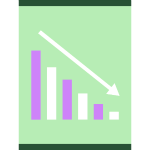
The fastest way to know if you’ve been penalized (and probably the only one as well) is to check your traffic.
You can also take a look at the Search Visibility widget from the cognitiveSEO Tool. If you see a drop there, that could be the sign of a penalty. In some cases, it can also be more relevant than other analytic tools.
For example, if most of your affected pages are on position 40+, you might not see a big change in traffic, as those pages rarely get any traffic. However, if the positions decrease, you should notice a drop in the Search Visibility metric.
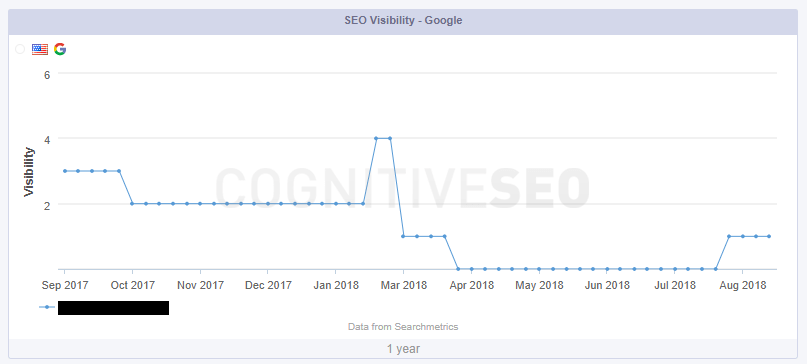
You can also use the Rank Tracker to monitor your most important keywords. You can even set notifications that will let you know via e-mail anytime there are changes in the positions of your keywords.
Make sure you’re checking only the organic traffic and not the general traffic. Google Update penalties apply only to organic search results, so PPC and Social Media traffic must be excluded.
You can also check the Google Search Console for the average position of keywords instead of using the Rank Tracker. If it has dropped dramatically, you might have been penalized.
However, if you’ve dropped only a couple of positions, it’s possible that the update just pushed up other competitors. And this takes us to the next step, which isn’t very different…
3. Check Again & Don’t Rush to Take Action
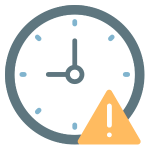 Haste makes waste. We’ve all experienced it. No matter how dramatic things might look, make sure you do a thorough analysis before you proceed with any action.
Haste makes waste. We’ve all experienced it. No matter how dramatic things might look, make sure you do a thorough analysis before you proceed with any action.
A big rule of thumb is to check the traffic again after some time. It could be one week, it could be one month, but make sure you keep an eye on that traffic. If the traffic and positions haven’t dropped at all, give it some time and check them again.
You never know, things might initially look good. This was the case for CognitiveSEO some time ago, when an update initially boosted us up in March 2018.

After some time, however, the traffic went down again, making the boost look less significant.
If you take a look at the spikes in the graph above, you can see that they match the following graph from the cognitiveSEO Signals tool.
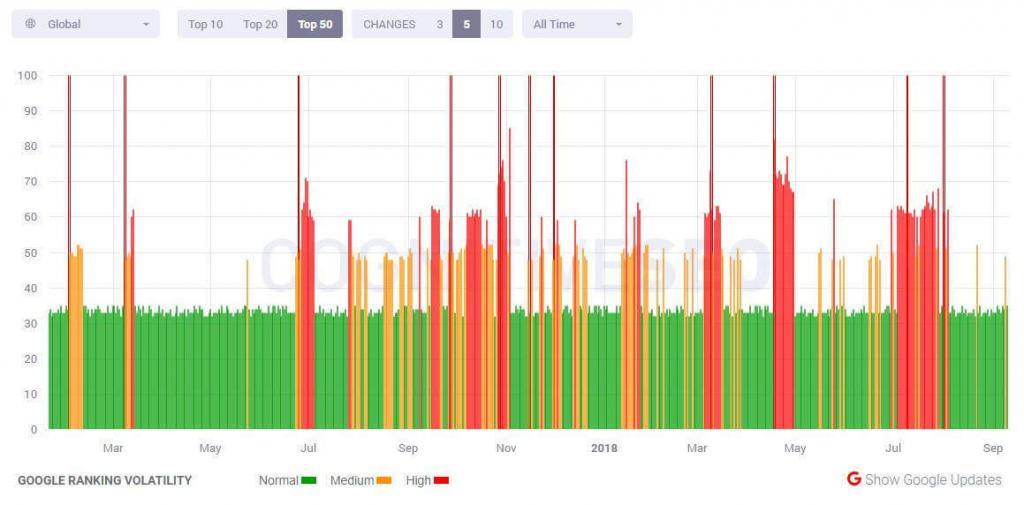
We’ve heard about and seen other similar examples. However, it can always go the other way around, when you have a slight push down, but then things start to get back to normal. That’s why you don’t want to make any hasty, poorly calculated decisions.
Worst thing to do is, however, to start changing things when the traffic hasn’t changed at all and your positions are good, based on what you’ve read on the internet.
You’ve read that the update possibly targets websites with 5% greater keyword density? Don’t rush in starting to remove keywords or rephrase articles, especially if you’re still ranking high with them.
Why? Well, it’s because:
Changes in your pages might actually attract Google’s bot to crawl and reconsider your website.
Even what you consider to be improvements to your content/page can sometimes result in ranking drops. That’s why you should do your best to avoid any changes to your content as long as you’re ranking high and are ‘content’ (bad SEO joke) with your positions.
For example, we have an article that ranks very well and has ranked very well for years now. The thing about it is that we don’t consider it to be one of our best. It has been written many years ago and competitors have since improved a lot, pumping big pieces of very detailed content. However, our article still ranks very well.
When we launched our Content Tool, we started an optimization campaign to improve all our articles. However, we skipped that article. We don’t want to make any changes to it and risk making it drop. Once it will start dropping on its own or, better said, our competitors will outrank us, we will consider updating it and transforming it into a better piece of content to try and get it back at the top.
4. Get in Touch with an Expert
 I’m not going to list anyone here, nor will this be a guide on how to pick a good expert. You’re going to have to do that research on your own. The only advice I will give in this direction is to follow step number 3. Double check and don’t rush to make a choice.
I’m not going to list anyone here, nor will this be a guide on how to pick a good expert. You’re going to have to do that research on your own. The only advice I will give in this direction is to follow step number 3. Double check and don’t rush to make a choice.
What I will say however, is why you need an expert when dealing with a penalty.
First of all, you will save time. An expert will always know what to look for and will also be able to prioritize issues. Second, you won’t have to worry about making any mistakes or taking any unnecessary action that could potentially do more harm. This, of course, is if you choose the right expert, so make sure you do your research well. Third but not least, the more you stay penalized, the more money you lose! Even if you have to pay someone to help you, in the end you’ll be better off.
Having an expert help you is the best and most efficient way of dealing with a Google Penalty.
If you have enough experience with SEO and want to deal with a penalty yourself, everything must have a beginning. Good luck and be brave! However, it’s still a good idea to have a second opinion from another expert before you start implementing any major changes.
5. Audit Your Website
 Every penalty fix should start with a website audit.
Every penalty fix should start with a website audit.
Whenever you notice some significant changes in traffic, it’s good to audit your website, even if it’s the 5th time this year. You never know what plugin caused an issue or what the dev team missed out on.
There are 4 main areas where you should take a look:
Technical:
When Google launches new updates, it can go through websites again and reconsider them. Old issues that Google might have overlooked on purpose might now be a reason for concern.
Are you confusing Google with bad hreflang or canonical tags implementation? Not a problem if your site loads in 3 seconds and all the others load in 10. However, if a new crawl reveals that other, better structured, sites start loading in 3 seconds as well, you’d better get to work.
This is a very broad subject, but our colleague Andreea has a great article on how to fix technical SEO issues.
Backlinks:
Backlinks can always be an issue. Even if Google said that Penguin 4.0 ignores spammy links, we’ve heard recent stories of websites getting penalized after a negative SEO attack.
You can always use the cognitiveSEO link analysis toolset to audit your link profile. The tool makes it easy to spot and sort out spammy links with the Unnatural Link Detection feature.
Content:
Content is a very important part of your website. Make sure you’re not disrupting Google with duplicate content, meta descriptions and titles.
Also, it’s a good idea to compare your content with the content your competitors have. Is there any particular area that you could improve on? Are there any topics that are searched but haven’t been covered?
User experience (UX):
Many recent updates and algorithms (such as RankBrain) focus a lot on user experience and how the users interact with your website.
You can start off by asking some friends to interact with your website. Give them specific tasks, but don’t tell them the steps. For example, ask them to contact you, find your number, send a message through the form, purchase a product or enroll in a newsletter.
Just give them the homepage and ask them to take notes on issues that they might find. Make sure to do this on both Desktop and Mobile Devices, with an emphasis on mobile devices, because it’s a growing market.
You can also use tools such as UserTesting to get your input, or ask a UX expert to have a look at your website and give some advice.
6. Exclude Other Penalty Possibilities
 Even if a traffic drop shows up right after an update is announced, it doesn’t necessarily mean that the update is the cause of the drop.
Even if a traffic drop shows up right after an update is announced, it doesn’t necessarily mean that the update is the cause of the drop.
As mentioned before, during a new update, Google might take a look at your website and find some undealt with issues.
It can also be a manual penalty, so check your Search Console. You’ll usually get a message there announcing your penalty, the reason for it and some steps to have it fixed. You can submit your website for reconsideration after dealing with the issue. More details about this can be found at this link.
There’s also the possibility that you are the recent victim of a negative SEO attack. You never know what really takes you down until you audit, so that’s why we have step 5 in place.
Make sure you exclude any other updates or issues before you start trying to fix the problem.
7. Develop a Strategy for Recovery and Execute It Step by Step
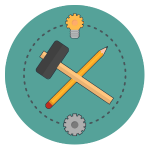 Once you have everything in line, it’s finally time to outline the plan. The secret to a successful recovery plan is prioritization. You might find a dozen of issues, but if you start fixing the minor, most insignificant ones first, you’ll lose money because they won’t have an effect on the penalty and your rankings will still be low.
Once you have everything in line, it’s finally time to outline the plan. The secret to a successful recovery plan is prioritization. You might find a dozen of issues, but if you start fixing the minor, most insignificant ones first, you’ll lose money because they won’t have an effect on the penalty and your rankings will still be low.
A plan will not only help you execute everything faster, but it will also help you keep track and monitor your results. If you don’t monitor the results of your actions, you won’t know what caused the penalty.
Once you’ve finished one step, give it a rest to see if it has any effect. Doing everything at the same time won’t help you figure out the cause of the penalty, so you won’t be able to know what to avoid in the future.
8. Keep Doing the Good Type of SEO
 Most of the time (as long as your website is not completely deindexed), the best way of getting out of a penalty is to keep doing the good things.
Most of the time (as long as your website is not completely deindexed), the best way of getting out of a penalty is to keep doing the good things.
Getting penalized is similar to gaining weight. You add a little bit every day, but you don’t really notice it, until one day the mirror finally ‘breaks’ it to you. The probability of you losing weight very quickly is low. If you’ve gained 25 pounds in one year, expect to take it around 1 year to lose it!
Trying to run 5 hours per day won’t work because, generally, you won’t be able to sustain it. Trying any shortcuts, such as pills and very restrictive diets, can get you into more trouble.
The best solution is to keep doing the right things over a long period of time and results will come. If you’ve followed our blog for a while, you should definitely know what the right things are. If you haven’t followed us… Well, now it’s the right time to start!
Just as a general outline, great content mixed up with great distribution result in great backlinks, which result in great rankings.
Brace yourself:
As for the ending, unfortunately you never know if you’ll ever recover from a penalty. It could take 2 weeks or it could take 2 years. That’s why it’s a good idea to always follow the rules and also never put all your eggs into one basket. Go take a look at the advantages of PPC, for example. It can come in handy during a Google penalty.
What are your experiences with Google Updates? Do you always see traffic fluctuations on your website? Have you ever been massively penalized? And… more importantly, have you ever recovered from a penalty? What were the steps you took? Maybe we can gather some more detailed steps for specific types of penalties in the comments section.

 Site Explorer
Site Explorer Keyword tool
Keyword tool Google Algorithm Changes
Google Algorithm Changes

my website was sandbox but no manual webspam actions. what shall I do?
Great article! Google updates bring a lot of pain for SEOs. One of my client site took 8 months to recover from Penguin update. I think, in case of an Google update we should not take any decision in haste because rankings may move up and down temporarily for many days. Let the dust settle down, and then gauge what needs to be done.
Thanks for the extensive article, this makes me more prepared for their next update because the last one really hit me badly
great content, thanks for the effort!